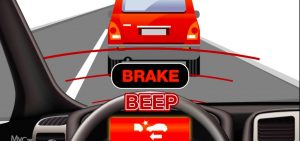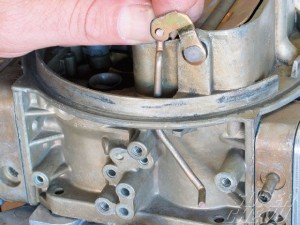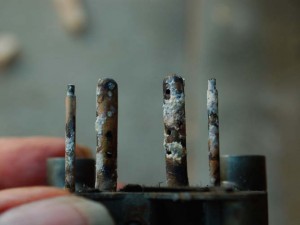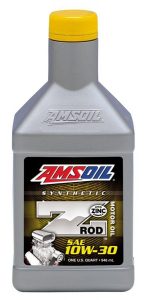The interest in tiny homes – and off-grid living – reflects a growing weariness with being carried along, unwillingly, by the rip-tide of “technology” as it makes life superficially easier but also alienating.
Cars are a good example. You can start the engine without a key, but when the engine won’t start, what do you do? Most people tap their phone – to call a tow truck.
Like modern phones – which are only that incidentally, since most people use them as computers – modern cars are also computers that incidentally serve as transportation. The driver is being systematically transformed into a passenger, even if he is sitting behind the wheel. The car pre-empts his driving constantly, braking and steering when it thinks either is warranted.
Many people weary of this, too.
Some are looking at older cars made before computers took over cars as way to continue driving without being pre-empted and also just because the older stuff made before computers took over the control of cars is more appealing on an emotional level, precisely because they’re not computers that function incidentally as vehicles.
But many years have elapsed since the last non-computer-controlled cars were made. There is no definitive line along the lines of the KT boundary – below which you will find the bones (so to speak) and above which you won’t. But – in general – if you want a car that didn’t come with a computer you’ll need to go back about 40 years, to the early ’80s at the very latest.
This means – if you’re not well over 40, yourself – you probably have very little experience with the cars of 40-something years ago as these cars were already getting old when you were very young. If you were even here at all.
There are things to know about such cars before you buy one – for the same reason that it’s a good idea to have some idea about what you’re doing if you decide to pursue an off-grid lifestyle before you actually go off-grid:
Pre-computer-era cars haven’t got computers – 
This means you control them. It also means you adjust them. They are not – as the saying goes – “plug and play.” There is no plug. There are screws that turn in and out. Cables and points and such that need to be set just right, sometimes by feel. Belts you tension. Chokes you set.
You will need to learn how to do this – and how much.
It’s an art that requires practice to become proficient.
Pre-computer-era cars have special needs –
Forty years ago, gasoline was gasoline. Not ten percent ethanol alcohol, as it is today.
Cars made before gas was adulterated with ethanol do not run as well on ethanol-adulterated “gas.” Their carburetors – the mechanical fuel-air mixing devices that pre-computer-era cars came equipped with – will have to be re-calibrated to compensate for the ethanol in modern “gas.” You will also want to be sure the carburetor, itself, has been rebuilt with ethanol-compatible parts – else you will have a mess on your hands when the ethanol dissolves the plastic and rubber parts from 40 years ago that weren’t made to withstand the corrosive properties of alcohol.
This also applies to all fuel lines coming from the gas tank to the carburetor – and the gas tank, itself. Forty years ago, gas tanks were generally made of steel – not stainless. Steel tanks rust fast – from the inside out – when you fill them with ethanol-laced “gas.” You will want to consider replacing the tank with a stainless steel one; the lines as well.
Pre-computer-era engines often need special oil –
Most people already know about ethanol. Many have no idea about oil – and how it’s changed over the past 40 years. It hasn’t been adulterated so much as altered. Most store-bought oil hasn’t got the additives (zinc and manganese) that oil always had 40 years ago – back when cars were made with engines that needed those additives. Since then, engines were designed to not need these additives – beginning in the mid-’80s – and thus they were removed from most readily available/store-bought oils.

f you use modern oil without those additives in an old car’s engine that does need them, you may end up with a damaged engine. Since most stores do not carry the specialty oil – or additives that can be added to store-bought oil, to make up for their absence in most store-bought oil – you’ll want to find and stock up on the oil your old car’s engine needs. Or the additives which can be added to store-bought oil.
Pre-computer-era cars operate without a net –
Most people who are under 40 today have never driven a car without anti-lock brakes and traction/stability control. If that’s you, it’s a good idea to be careful at first when you drive such a car for the first time. The wheels will lock up if you apply the brakes full force – and the car will skid uncontrollably into whatever it’s pointed at if you do not learn to ease off the brakes and recover control of the car.
Similarly, if you enter a curve at a speed fast enough to break traction, the car will slide and it will be up to you to keep it from sliding out of control.
These are skills that have been replaced by electronics and will need to be re-learned by those who are tired of electronics.
But just as it’s empowering to learn how to grow your own food and be independent of the grid, so also learning how to control – and repair – your car, yourself.
And that’s probably why more and more people are going old – and forsaking the new.
. . .
Got a question about cars, bikes or anything else? Click on the “ask Eric” link and send ’em in! Or email me at [email protected] if the @!** “ask Eric” button doesn’t work!
If you like what you’ve found here please consider supporting EPautos.
We depend on you to keep the wheels turning!
Our donate button is here.
If you prefer not to use PayPal, our mailing address is:
EPautos
721 Hummingbird Lane SE
Copper Hill, VA 24079
PS: Get an EPautos magnet or sticker or coaster in return for a $20 or more one-time donation or a $10 or more monthly recurring donation. (Please be sure to tell us you want a magnet or sticker or coaster – and also, provide an address, so we know where to mail the thing!)
My eBook about car buying (new and used) is also available for your favorite price – free! Click here. If that fails, email me at [email protected] and I will send you a copy directly!












Current news in the advancement of vehicle technology: “Ford’s latest patent enables vehicles to repossess themselves and drive away.”
https://interestingengineering.com/transportation/ford-will-make-driving-gradually-harder?
Points and plugs, those were the days of the shattered mechanic.
On a side note, we all lost a good one with the death of Pat Goss recently who had a great show on WTLP, where he took calls for diagnosis of problems and ran two local MD/DC area shops.
At least we still have any recordings of his show…great stuff.
And Eric, as always, plugging away and putting out the internet version of Pat Boss’s show.
I was hoping that a model would emerge that was old school low tech. I doubt the Mahindra Roxor will ever be deemed USA road legal.
Perhaps one day a “prepper” company will come up with one that can be driven on road.
Hey Dan,
That’s a cool little unit they make! $20k for the base unit isn’t TOO bad, but I think they could do a little better, especially if it isn’t road legal.
But they CAN be driven on the road. You’re just likely to be assaulted by state highwaymen if you do.
Eric,
Perhaps the one thing that was most exciting about electric cars was off-grid capability.
That is to say, they could be charged with solar/ wind/ hydroelectric etc. electricity, when gasoline was nowhere to be found. If the electric car was a truck, it could offer a powerful, simple and elegant solution to the problem of off-grid transport.
Of course, that was figuring simplified electric vehicles would be produced, not these super-connected “smart phones on wheels”.
In my group of friends, I’m often referred to as “Amish” or “Grandpa”. That being because most of the technology I use has never heard the word silicone. I got my CRT tv and my phones that still say Bell System Property-Not For Sale (one’s even still wired for party lines). Digital devices are boring, give me an analog device any day. It’s simply much for fascinating to watch TV when you know it’s being powered by various coils and transformers operating at thousands of volts shooting radiation inside a vacuum tube. At least, that’s the case for me.
Modern engine controls would be great if their workings were open source. The problem with modern whiz-bang gadget cars is they’re black boxed and mandated by uncle scam. There are already aftermarket (and open source) ECU’s available that can replace the proprietary controls but they’re illegal to install on a car that travels the highwaymens roads. If used to their full potential a standardized, open source ECU could be almost as roadside fixable as mechanical controls so long as the owner kept some spares in the trunk.
Technology has also made off-grid living easier than ever while still enjoying the benefits modern convenience. A modest solar power system around $5000 will allow for refrigeration, small appliances and an electric well pump-all under YOUR care and control. Bump the solar arrays size even more and you can use a diversion load controller to get fuel-free hot water and electric stovetop use nearly every day. Off-grid does not mean “roughing it” any longer unless you live in the high latitudes.
The real weariness of “the grid” comes from its opaque, authoritarian roots.
Couldn’t agree more Castle nut Re: open source.
We recently did a similar thing in my biz. We sell higher end motor controls and our customers were getting more and more upset at computers running things, but worse, proprietary computers/code. So we did a little experiment and designed and built old-style relay logic stuff, twice the price of circuit board/plc stuff and our clients love them. We’re doing very well with them.
ChrisIN, I always thought this would be the way to go, given a pretty decent computer is (or was) so cheap. Just build your own controller and replace the official one once it becomes uneconomical to replace with that. Wonder why this never caught on.
Yep, no one really wants to fool with points…I remember all the aftermarket ads for electronic ignition modules in the 1970s & 1980s car magazines.
We just need standardized modules.
Same for fuel injectors…implement standardized units & forget carburetors forevermore.
I fondly remember my dad’s 1967 Ford F150. I think I could still set the points on it, and on the old Ford 800 tractor!
I bought an ’84 F-150 with the straight 6 and a carb. I couldnt get it runnig right so I took it to a good mechanic, he got things straightened out but told me the computer already ran things in this era of truck. I will sell it and get an older one. I have a ’73 CJ-5, simple as it gets and luckily where I drive it in the northwoods of Wisconsin non ethanol gas is still available so that is all I use.
Eric,
I have a question: I’ve heard engines with rope seals are *not* to use synthetic oils due to cause a leakage especially at the rear main. I’ve also heard I have my proverbial head up my hindquarter for suggesting this and synthetic oils are fine in this application. What is your take on rope seals vs oil type?
Hi Hans,
I think the issue has more to do with old seals. I’ve not had an issue with leaks in my old (rebuilt) stuff – and all I use is synthetic. Top-shelf stuff such as AMSOIL. But use of higher lubricity synthetics in old engines that have never been rebuilt and which have old/brittle seals can indeed result in leaks.
I actually did a kind of experiment with this, inadvertently. I put synthetic in an old (unrebuilt) Oldsmobile 403 in a friend’s ’79 Trans-Am and it did seep/drip. Nothing catastrophic. But still.
Chrysler Lean-burn ECM, circa 1976. Dad’s Charger Daytona has the 318 engine so no LB module. Probably could have been revolutionary but they mounted it on the air cleaner instead of the firewall, exposing the ’70s era printed circuit board to all the heat and vibration from the engine.
https://www.allpar.com/threads/the-chrysler-lean-burn-engine-control-system-first-onboard-auto-computer.229998/
Hi RK,
I remember the Lean Burn system, too!
Pros, certainly – but also some cons. A mechanically (or vacuum-advanced) distributor hasn’t got the flexibility, certainly, of an electronically controlled system. But it has the upside of being mechanical – and so, visible. You can see what ails it. You can touch the springs and weights. Such systems are easier to service, too – though conceded they often require servicing (adjusting) more often.
The catch as regards all this stuff is I think that as electronics have made engines run more efficiently and reliably they have also made them less and less DIY serviceable and thus more alienating, as per my article. Analogously – a smartphone can do things which would have been regarded as magical as recently as the ’80s. But a corded phone from the ’80s will still make calls today and as well as – or better than (no drops) a smartphone and for a fraction of the cost.
Similarly, an old mechanical contraption like my Trans-Am is still running today, using most of the parts it was built with, almost 50 years ago.
They actually had less power than a non lean burn car,plus the power robbing smog carburetor..
Even your 318 might have a smog carb that chokes the power…Thats why some people say 318 2bbl are pretty quick,others say they’re dogs..Even the early 70’s they had 2 different 2bbl carbs..It was a 20 hp gain with the other 2bbl carb both NET h.p and torque probably the same or more as you really felt it..150 hp and 170 hp 318’s were a thing as it was the carb..You really notice that 20 hp and probably same/more torque! It really woke them up!
It was more than 20hp as it gave you 6 seconds off the 0-60 and about 3 from a 74 Charger..We did that and timed it on a 3 year old 1985 Chrysler Fifth Avenue 318 tiny smog 2bbl and 2.21 rear axle! Stock it was 14 second 0-60 dead stock got it down to 8.9 0-60 just with orange box ecu,2bbl off a 1971 Dodge van! Rebuilt the carb,new jets etc…Replaced the exhaust,no cats,no resonator nice quiet turbo muffler,still single! We were going to do duel exhaust,4bbl and 3.21 gears but my Dad said,car was good enough it was his daily driver circa 1988..Plus it got mid 20 mpg and 18-22 the way he drove average,mainly city.Car lasted nearly 400,000 miles was rear ended in 2001 and ended the cars life,was still a real good car!! New trans at 312,000 only real issue.
I owned dozens of lean burn and smog era Chrysler products..I loved the 78-79 Magnum’s..My 1978 Dodge Magnum X.E 360 4bbl (not the high performance E-58) beat my buddies 1979 403 Trans Am,those ran upper 6 second range 0-60..I swapped the lean burn and went to 1969 340 points ignition and 650 Carter AVS 4bbl off the same car.I had 2.45 rear axle one wheel peel..Remove lean burn/swap car and even non lean burn 70’s-80’s Mopars ditch the factory carbs,those are ruining your enjoyment of smooth idle,easy cold starts,better gas mileage and POWER,they let you rev,with the smog carb you get 1/4 throttle only!
The main point being, that you CAN repair cars from that era. Often while on the road. Once upon a time, my truck died on the road. I determined the points had failed. Borrowed a fingernail file from my wife, and cleaned the points, and down the road we went. Replacing and properly setting said points at a more convenient time. Now if a car dies on the road, you have to tow to a place with an OBD reader that can determine what likely failed. My late father was an independent auto mechanic until his retirement some 30 years ago. At that time he often lamented that per recent shop manuals, the method of fault detection increasingly called for “replacement with a known good part”. As if one might have an inventory of such parts for whatever make and model car came in the door. Another once upon a time, my 89 dodge Dakota died on the road. Had to have it towed to an OBD reader, and found that the plug wires had failed the test. After 60k miles. Previously, I had never HAD to change plug wires, though I usually did upon acquiring a “new” used car.
Morning, John!
Yup… once, when I was driving my ’74 Beetle, the metal plug on the back of the Solex carb came loose. It just so happened that a dime fit that hole almost perfectly and – when sealed with some RTV – was good to go again in just a couple of minutes.
My ‘75 Dodge Dart died suddenly one morning; popped the hood and saw that the ignition module had rusted off the firewall, thus losing its ground. Fortunately I had some clip leads so I was able to clip it to an engine bolt until I could make a permanent repair. Miss that 225 slant six, not so much the car it was in – turned to rust in about five years.
Indeed, body build quality from MOPAR severely declined in the early 70s, as they were about to go belly up. It took some time for them to recover from that.
‘interest in … off-grid living reflects a growing weariness with being carried along, unwillingly, by the rip-tide of “technology”’ — eric
Are we not weary of EV agitprop from the Gov/Media axis?
Consider how the EPA calculates ‘MPGe’:
‘EPA’s efficiency rating for EVs — called “MPGe”, for miles per gallon equivalent — gives consumers an idea of how far an EV can travel on 33.7 kilowatt-hours (kWh) of charge. Why 33.7 kWh? That’s the amount of electricity that is chemically equivalent to the energy in a gallon of regular gasoline.
‘The average MPGe rating for 2022-model-year EVs sold in the U.S. is about 97, so driving 100 miles in that hypothetical average vehicle would use 34.7 kWh of electricity.’
https://www.cnbc.com/2022/03/19/cost-of-charging-ev-vs-gas-prices.html
Burned in the Otto cycle used in spark-ignition engines, that gallon of gas will be converted to usable driveshaft torque at about 30% thermal efficiency.
BUT — 33.7 kWh of electricity is DOWNSTREAM of the power plant, where the thermal efficiency runs 35% to 38% for coal plants.
Pretty neat trick, huh, ‘taxing’ the IC vehicle with efficiency losses while exempting the EV.
Quick corrective calc for China’s coal-powered EVs: 97% ideal MPGe * 35% power plant efficiency = 34 real-world MPGe
Thermodynamics, bitches: EPA admin Michael Regan, who earned a BS degree in earth and environmental science, has the academic chops to spot the gross green deception here.
Thanks for that Jim. I recently saw some sticker on EV cars in CA, “clean air vehicle”. I think it gives them privileges like HOV lanes, etc…. What a crock. And most people believe it.
hi Jim
Diesel is best over 50% efficiency, gas now up to 37% or more, a Mercedes Formula 1 gas engine = 50% efficiency . EV’s are worse then, thermal efficiency runs 35% to 38% for coal plants, there is also energy loss in transmission, so EV’s are under 35% efficiency.
Diesel is the best and they are banning them.
So I guess we can accurately say that all EV’s are less efficient and much worse for the environment.
And taxing it exorbitantly. Which is why it costs so much more at the pump. Diesel is much CHEAPER to make than gasoline, and used to cost much less at the pump accordingly. There is nothing in the current “regulations” that does NOT penalize diesel.